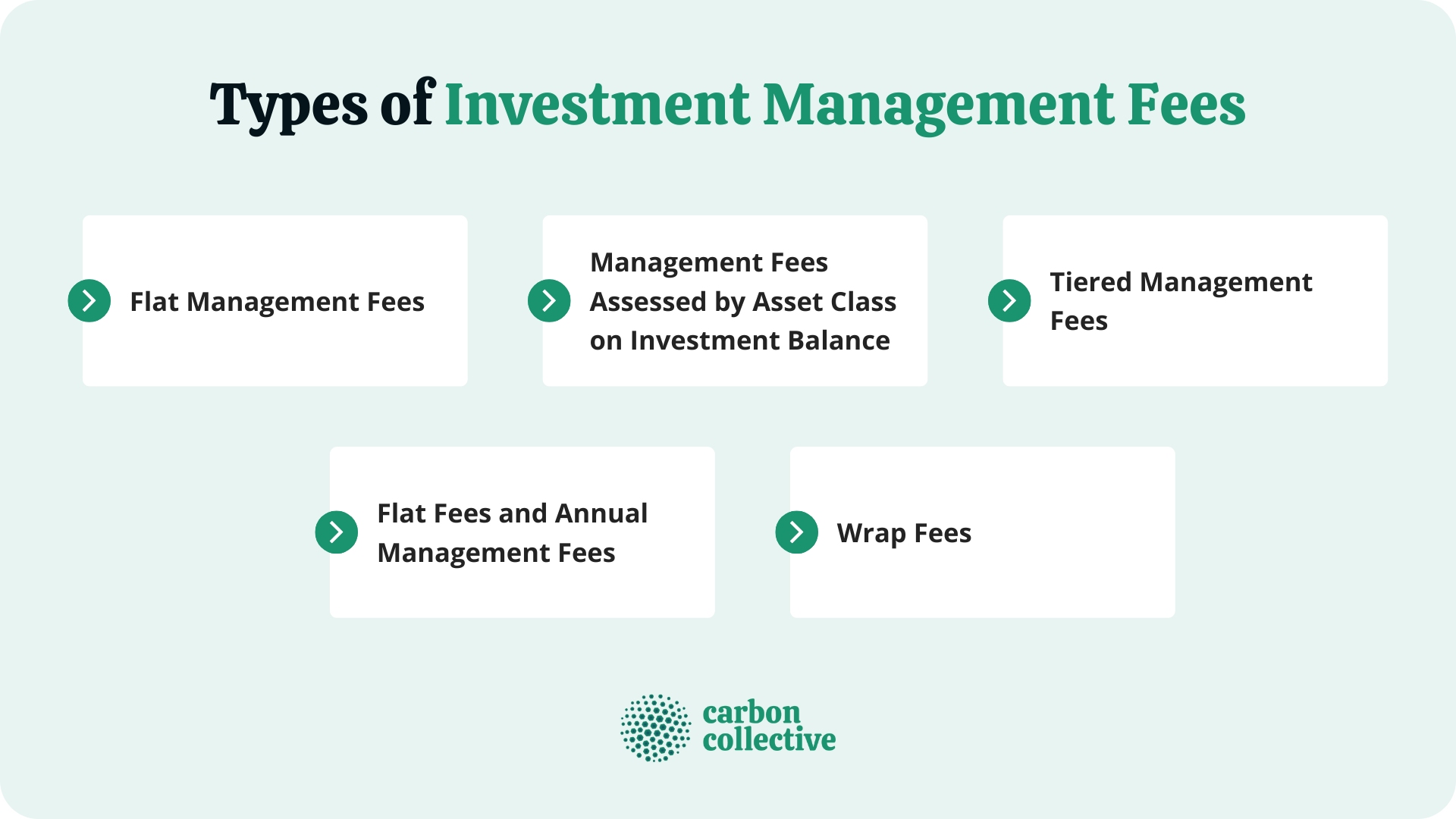Understanding Investment Management Fees
Management fees are the norm among all investment opportunities in the investment management industry.
In return for paying management fees, access to the expertise and resources of investment professionals is provided to investors.
The professionals can help investors rebalance portfolios, allocate risk, and give personalized investment advice.
Additionally, management fees cover expenses involved with portfolio management, including funds operations and administrative costs.
Management fees can differ from manager to manager and financial firm to financial firm.
However, they are often a percentage of the total assets under management. Usually, it ranges from 0.20% to 2.00%, depending on factors like management style and investment size.
Generally, investment firms that are more passive with their investment charge a lower rate than those that manage their investments more actively.
Sometimes, those eligible to receive a lower management fee are individuals with a high net worth or those institutional investors. Management fees can also be known as investment fees or advisory fees.
Types of Investment Management Fees
Different types of investment management fees include:
Flat Management Fees
One of the common fee schedules to understand is a flat-free structure.
It implies that the advisor charges a single rate regardless of your asset or investment selection. It is essential to consider that several investment managers may select to lower this fee as your portfolio rises.
For instance, your fee might be 1.5% if you have less than $1 million under management, whereas a 1.25% fee for someone with a portfolio is between $5 million and $10 million.
Management Fees Assessed by Asset Class on Investment Balance
The clients are charged a fee based on the assets within their account with this fee structure. It implies that a client may pay low to no fees on cash reserves in their portfolio.
Generally, value investors frequently choose this type of fee structure because they sit on cash reserves and eventually use them to execute an investment strategy.
For instance, such securities may be charged by an advisor, including invested equity for 1.50%, fixed-income securities like bonds are 0.75%, and cash or cash reserves are 0.00%.
During the times when clients are building up cash reserves may benefit from this fee structure.
Tiered Management Fees
Tiered management fees are charged to clients based on the value of assets in their accounts.
This type of fee is like a hybrid between a flat rate and an asset-based fee because it has both features.
No matter the account size, all clients pay the same rate at the deposit level with this structure fee.
For instance, on the first $250,000, the investment manager may charge 1.75%. On the next $750,00, $1.50% will be charged, and so on.
Flat Fees and Annual Management Fees
An annual management fee is charged as a percentage of assets and is paid yearly. This fee is most common for retirement accounts like 401(k)s and IRAs. The client pays one rate regardless of trade frequency, earnings, and losses.
Wrap Fees
Wrap fees are all-inclusive for services like investment management, financial planning, and custody.
This fee is generally charged as a percentage of assets and can be paid monthly, quarterly, or annually.
Investment managers charge wrap fees for the assets they manage for you from 1% to 3%.
In a more standard payment method, you pay a small percentage but pay trading fees or commissions separately.
On the other hand, wrap fee programs "wrap" these fees with additional administrative costs and investment expenses into one charge.
What Do Investment Management Fees Pay For?
Investment management includes professional assessment and asset management.
Assets are composed of various types, such as bonds, stocks, mutual funds, ETFs, and alternative investments like real estate, commodities, etc.
A portion of your investment management fees will likely support this analysis, including fundamental, technical, charting, and cyclical analysis.
To carry money to its full potential, financial advisors and their teams are in charge of researching markets and trends and making strategies.
How to Ensure Your Financial Advisor Fees Are Fair?
Make sure you comprehend the fee structure and what services that fee involves before agreeing to work with an investment manager or advisor.
Advisors should be able to explain how they add value to their accounts.
Do further investigation or select another advisor if an advisor provides an indirect and elusive answer.
A red flag is when an advisor tells you not to worry about costs.
Know all their compensation sources and other professionals they work with. Before proceeding, understand what you are paying for.
Final Thoughts
Investment management fees are the charges associated with having someone manage your investments.
The three most common fee structures are flat, asset-based, and wrap fees.
When selecting an investment manager, understand their fee structure and what services that fee entails.
Ensure that your financial advisor is transparent about their fees and that they are providing value for the fee they are charging.
FAQs
1. What is an Investment Management Fees?
An investment management fee is a charge assessed by an investment manager in exchange for providing services like asset management, financial planning, and custody. This fee is generally charged as a percentage of assets and can be paid monthly, quarterly, or annually.
2. What are the advantages of Investment Management Fees?
Advantages of this type of fee structure include having a professional manage your assets, getting access to financial planning services, and having someone in the custody of your account.
3. What are the cons of Investment Management Fees?
Paying an investment management fee may result in less money in your account than if you were to manage the account yourself. Additionally, you may need to get the level of service you expect for your fee.
4. How do I know if an Investment Management Fee is fair?
Make sure you comprehend the fee structure and what services that fee involves before agreeing to work with an investment manager or advisor. Additionally, research other investment management fees to understand what is fair. Finally, ask questions and make sure you are comfortable with the answers before proceeding.
5. What other fees should I be aware of when working with an investment manager?
Other fees to be mindful of include trading fees, commissions, and wrap fees. These fees can be charged in addition to the investment management fee, or they may be rolled into one "wrap" fee. Ask about all fees before agreeing to work with an investment manager.


